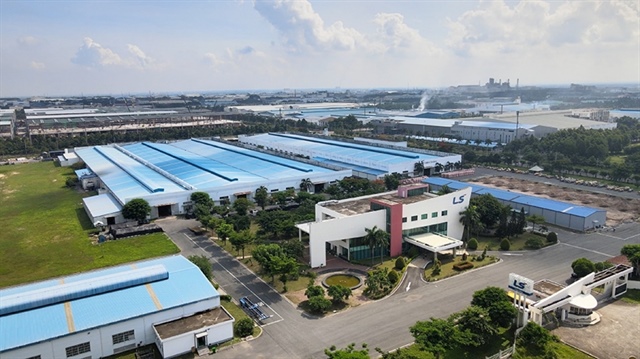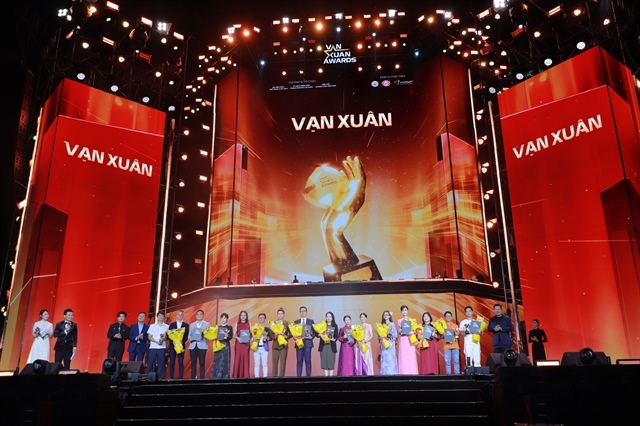QE3 hoped to help boost Vietnam’s exports to the US
QE3 hoped to help boost Vietnam’s exports to the US
“Optimism” is the right word which describes the feeling of the Vietnamese business circle after the US government announced the third round of quantitative easing, or QE3, to stimulate the US economy.

In principle, the economy stimulus package would give Vietnam the opportunities to export more to the US, where the demand increases thanks to the stimulus by the government. However, economists still keep cautious when asked if Vietnamese enterprises can grab the golden opportunity.
The opportunity for seafood industry?
The Vietnamese market in June and July received a big amount of white shrimp imports from Thailand. Vietnamese businessmen cannot understand why Thai shrimp was still one dollar per kilo cheaper than Vietnamese products, though Thai shrimp had to “transit” in Cambodia, which pushed the prices up.
Nowadays, Thai white leg shrimp has become the favorite material import source for Vietnamese seafood processing companies. They also import shrimp from India at the prices lower by 1-2 dollars per kilo than the domestic prices.
Tran Van Linh, General Director of the Da Nang based Thuan Phuoc Company, an enterprise in the central region, which is believed to have the highest white leg shrimp output, has admitted that Vietnamese shrimp exporters cannot compete with Thai, Indian and Pakistani products in terms of price in the US market.
The US, with the economy stimulus package, would see the consumption demand increasing in the time to come, which means higher opportunities for the exporters to the market.
“In principle, the opportunities would be divided equally to all countries. However, the advantage will be in favor of the countries which have lower production cost,” Linh said.
India and Thailand are now the biggest white leg shrimp exporters to the US, where their products are sold at 2-3 dollars per kilo cheaper than the products from other countries.
Meanwhile, Vietnam is considered a “black tiger shrimp” export power. However, the US importers now can buy black tiger shrimp from Pakistan at the prices lower by 3-4 dollars per kilo.
The US imported 254 million dollars worth of catfish from Vietnam, up by 30 percent over the same period of the last year. However, Duong Ngoc Minh, Deputy Chair of the Vietnam Association of Seafood Exporters and Producers (VASEP) has warned that the export in big quantities and at low prices may lead to an anti-dumping lawsuit.
Meanwhile, Vietnam’s catfish now has to compete fiercely with China’s African carps, sold at 3-3.5 dollars per kilo only, the same with catfish products. Therefore, Vietnam’s catfish has been no more considered as the cheap food product in the US market.
Wooden furniture, garment companies wish to see stable policies
The Ministry of Industry and Trade, while reporting the export turnover increase of 13 percent in August in comparison with the same period last year, said that Vietnamese products still meet technical barriers when entering the market.
Pham Xuan Hong, Deputy Chair of the Vietnam Textile and Apparel Association (Vitas), hopes that the garment export panorama may be brighter the next year. However, he said the US is a lucrative market for many other exporters, including Bangladesh, Pakistan, Indonesia, Malaysia and China, not only for Vietnam.
His words can be understood that a lot of exporters are targeting the US market, and Vietnam would have to compete with them fiercely to obtain a piece of the cake.
Meanwhile, wooden furniture manufacturers have complained they now have to compete with Chinese, Taiwanese and Malaysian rivals.
Ngo Thi Hong Thu, Deputy General Director of Truong Thanh Furniture Group, said while the manufacturers can borrow money at the low costs of 2-3 percent, Truong Thanh has to pay 20 percent per annum. Therefore, Vietnamese have to set high export prices to get orders, or they have to accept to fulfill small orders and make the products the foreign rivals cannot.
vietnamnet























